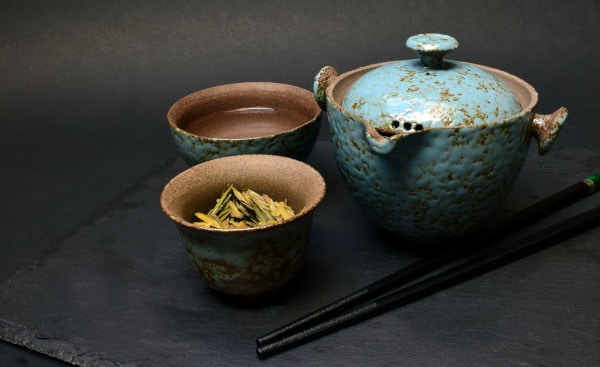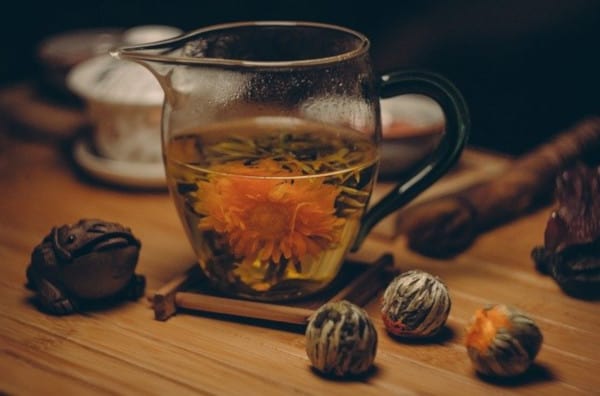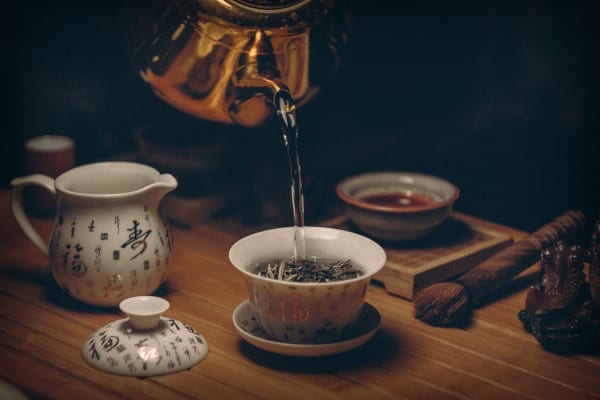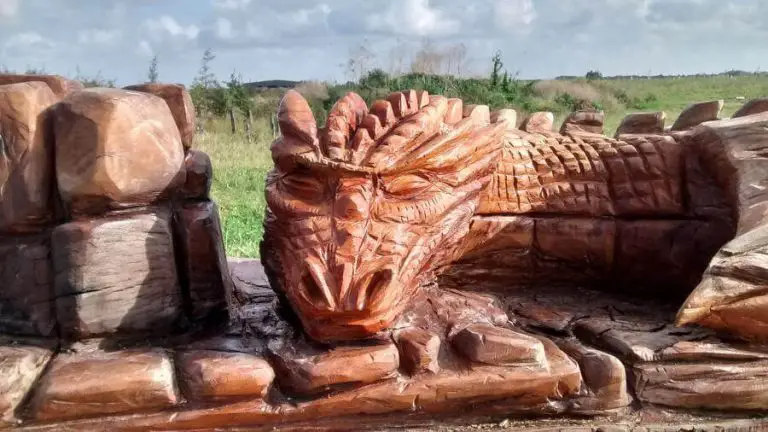In this guide, we will discuss the Chinese method of tea-making. China has a long-term tea-making tradition called the “gongfu tea ceremony” (工夫茶) or also called “kungfu tea ceremony” (功夫茶), which can be literally translated into “making tea with great skill”.
While most Chinese and people with Chinese descent are aware of gongfu tea (or gongfu cha) as an important part of their culture, very few Chinese actually know how it’s done. A core aspect of the Chinese tea making tradition is about precision, and so it is mostly about controlling all the different variables of tea-making to achieve consistency in flavor.
Although gongfu tea is called “ceremony”, it is quite different from the Japanese tea ceremony that is more symbolic in nature. The Chinese tea ceremony is very practical and the objective of the tea-making ceremony is to consistently make the tea taste as good as possible.
In this guide, we will discuss all you need to know about the Chinese method of tea-making for different types of Chinese teas.
Preparing Your Chinese Tea Set
The very first step in a proper Chinese tea-making is to prepare your Chinese tea set. You should prepare these beforehand:
- The Chinese tea of your choice
- A teapot of the right size according to the number of people being served. You can use a gaiwan if you have one, and you can also use a Western glass or porcelain pot
- A tea kettle of any type
- A pitcher with a leed
- A Chinese tea-scoop or you can also use a Western teaspoon
- Chinese tea tongs. Very important for a proper gongfu cha ceremony, used for handling the cups and stray leaves.
- A Chinese tea strainer. Specially shaped to fit Chinese teapots and pitchers with a very fine mesh.
- The tea tray, which also functions to collect the water that is splashed. This is optional and you can replace it with any platter or a sheet.
Take a look at these “Chinese Teaware“ designs – Aff.link
Making a Proper Chinese Green Tea
The Chinese Green tea (茶 lǜ chá) is very delicate, and a proper gongfu cha with green tea would demand extra care for some aspects.
There are three different techniques for brewing Chinese green tea: bottom-drop, mid-drop, and top drop.

Bottom-drop technique
In this technique, the tea leaves are “dropped” first into the teapot before the hot water is poured. This is the most common technique in brewing Chinese green tea and can be used for most types of green tea leaves.
Some green tea leaves tend to float when the water is put first in the teacup, so the bottom-drop technique is preferred. In general, if the tea leaves are flatter and tend to float, use this technique:
- Warm the teapot with hot water then discard the water
- Add your tea leaves (as a general rule of thumb, 1 gram of tea leaves for every 50 ml of water)
- Pour the hot water (around 80°C) into the teapot until it is one-third full
- Tilt the teapot and slowly rotate it two times to allow infusion
- Pour more hot water until it is almost full, and let the tea rest for around 1-3 minutes
You can drink until one-third of the tea is left before refilling, and you can refill for a total of three times.
Mid-drop technique
As the name suggests, in this technique the process is divided into three: pouring in hot water – dropping the leaves – pouring in hot water. So, the tea leaves are added in the middle of the process. This method is great for bud-shaped green tea leaves:
- Warm the teapot with hot water then discard the water
- Pour the hot water (around 80°C) into the teapot until it is one-third full
- Add your tea leaves (as a general rule of thumb, 1 gram of tea leaves for every 50 ml of water)
- Tilt the teapot and slowly rotate it two times to allow infusion
- Pour more hot water until it is almost full, and let the tea rest for around 1-3 minutes
As before, you can drink until one-third of the tea is left before refilling, and you can refill for a total of three times.
Related reading: Innovation Through the Ages: Unraveling the Timeline of Chinese Inventions – Opens in new tab
Top-drop technique
The top-drop technique adds the tea leaves after the hot water has been poured. It is the most suitable for brewing the highest-grade green tea leaves that are very tender and delicate. If water is poured above the leaves, it might break the tender tea leaves, destroying the value.
- Warm the teapot with hot water then discard the water
- Pour the hot water (around 80°C) into the teapot until it is almost full
- Add your tea leaves (as a general rule of thumb, 1 gram of tea leaves for every 50 ml of water)
- Let the tea rest for around 1-3 minutes to allow infusion
As usual, you can refill up to three times with this method.

Making a Proper Chinese White Tea
The Chinese white tea (茶 bái chá) is lighter than the green tea with very minimal to no oxidation, giving it a signature mellow flavor. The tea leaves are also more delicate, and so the middle-drop technique is preferred.
We’d recommend using the gaiwan (Chinese tiny teapot) to brew the Chinese white tea, but you can also use a regular glass/porcelain teapot:
- Warm the teapot with hot water, and discard the water afterward
- Fill one-third of the gaiwan with hot water (80°C to 90°C)
- If you use a gaiwan, you can add around 2 grams of white tea for 50 ml of water. For example, if you are using a typical 110ml gaiwan, you can add 5g of white tea
- Tilt the gaiwan and slowly rotate it two times for infusion
- Fill the gaiwan with more water until it is almost full
- Infuse the white tea for around 5 to 6minutes
You can refill the gaiwan when ⅓ of the tea is left, and refill it for 4 to 5 times.
Alternatively, if you are using stronger tea leaves that are not as delicate, you can use the bottom-drop method:
- Warm the teapot with hot water, and discard the water afterward
- Add around 1 to 2 grams of white tea for 50 ml of water.
- Fill one-third of the gaiwan with hot water (80°C to 90°C). Avoid pouring directly onto the tea leaves, and pour slowly
- Tilt the gaiwan and slowly rotate it two times for infusion
- Fill the gaiwan with more water until it is almost full
- Infuse the white tea for around 5 to 6 minutes
Take a look at these “Chinese Teaware“ designs – Aff.link

Making a Proper Chinese Oolong Tea
Oolong tea (乌茶 Wū Lóng Chá) is another popular Chinese tea variant that is semi-fermented and tastes slightly heavier and richer in flavor than the green tea.
In brewing the Chinese oolong tea, we’d recommend using the gaiwan with the following steps:
- Warm the gaiwan with hot water and discard afterward
- The typical ratio when using a gaiwan is 1 gram of oolong tea for every 20 to 30ml of water, add the tea leaves into the gaiwan before adding water
- Pour boiling hot water (100°C) into the gaiwan, slowly rotate two times then quickly discard the water (use a strainer). This is a necessary step to “wake” the unique aroma of the oolong tea
- Refill with 80°C hot water
- Let the tea rest to allow infusion. For lightly fermented oolong tea, you should infuse the tea for around 40 seconds. For deeply fermented oolong tea, infuse for ten seconds.
You can use a glass/porcelain teapot if you don’t have the gaiwan and follow the same steps.

Making a Proper Black or Dark Tea
Black tea (红茶 Hóng Cha) and Dark tea (黑茶 Hei Cha) are the heavier, fermented version of Chinese tea, and there’s also the 普洱茶 Pǔ’ěr chá, which is a popular variety of the dark tea from Yunnan province.
We’d recommend using a bottom-drop technique for black and dark tea:
- Warm the gaiwan with hot water and discard afterward
- The typical ratio when using a gaiwan is 1 gram of black/dark tea for every 50 ml of water, add the tea leaves into the gaiwan before adding water
- Pour boiling hot water (100°C) into the gaiwan, slowly rotate two times then quickly discard the water (use a strainer). This is a necessary step to “wake” the unique aroma of the tea.
- Refill with 80°C hot water
- Let the tea rest to allow infusion. You can let the tea infuse for around 10 to 20 seconds for the first brew.
Black and dark Chinese teas tend to be relatively thick, and you can refill the pot with water 8 to 10 times before they lost all the brews.
End Words
Another important tip is that you can leave the leaves in the gaiwan/teapot for up to 12 hours with the lids closed. This is useful if you are drinking your tea at home and you might still have some brews left on the leaves.
The main principle is brewing Chinese tea is to understand your tea leaves: if it’s delicate or tender, add water first. If the leaves tend to float, however, use bottom-drop or middle-drop techniques.
Last but not least, remember that the most important rule is if you like the taste, it’s probably a good technique. Understand the principle, but don’t be afraid to experiment.
Check out our “Free Culture Library“. We have compiled some great free resources, about Chinese culture, for your research.

Stay in Touch
 Join our newsletter by using the forms on this website or click here!
Join our newsletter by using the forms on this website or click here! Follow us on Google News
Follow us on Google News Follow us on Facebook
Follow us on Facebook
Featured Image from Pexels





